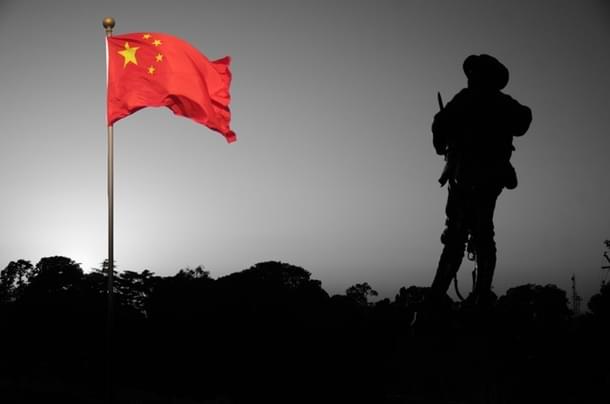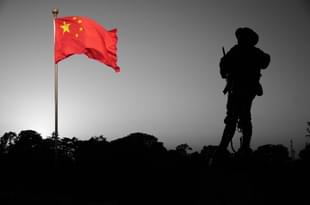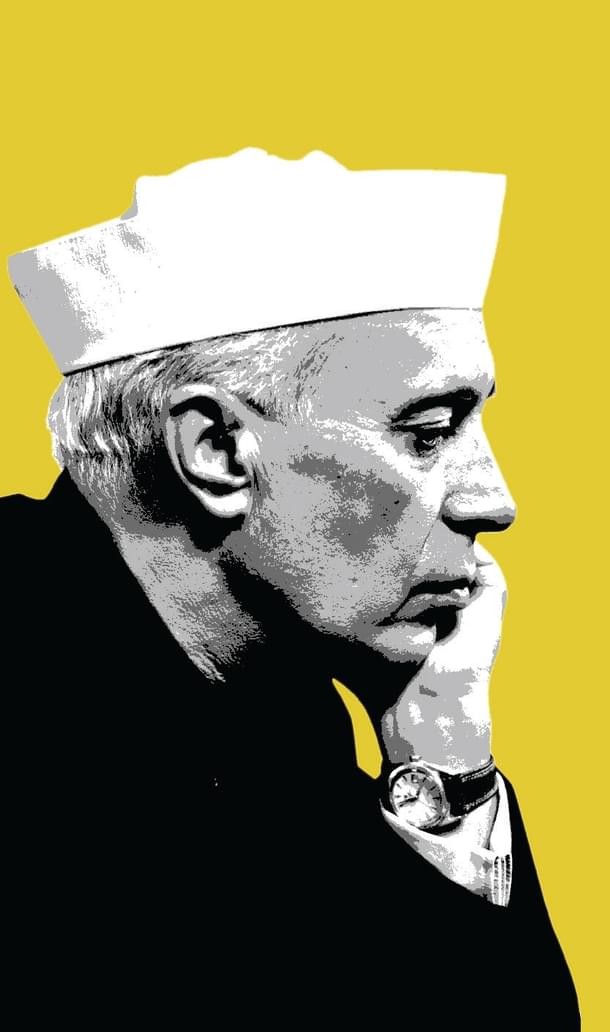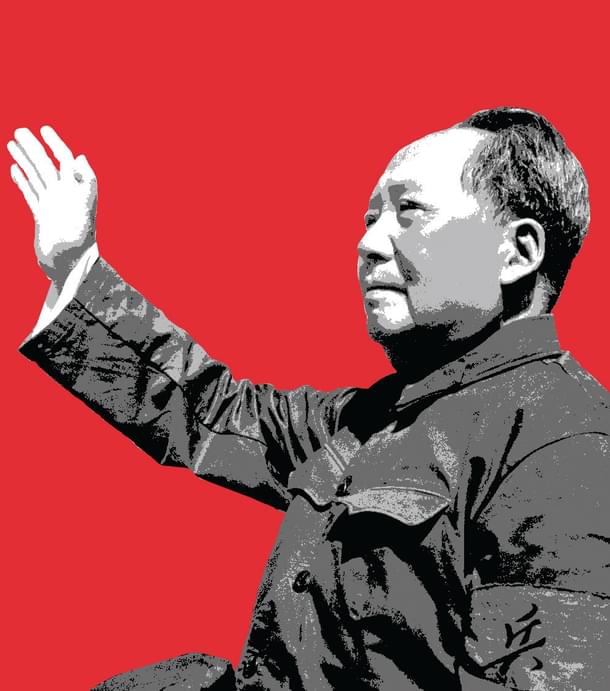Magazine
What if the Chinese Had Stayed on in 1962?
Shovon Chowdhury
Feb 08, 2015, 06:30 PM | Updated Feb 18, 2016, 12:28 PM IST
Save & read from anywhere!
Bookmark stories for easy access on any device or the Swarajya app.


December 16, 1971. Washington DC. A ferret-faced little man is poised, his sweaty finger on the nuclear button. It’s time to send the Chinese a message. The fate of the world is in the hands of Richard M Nixon
The Imperial British loved making maps, because of the fresh air, and the loyal native bearers. As a result, the borders of India were re-drawn repeatedly, by Henry Strachey in 1847, H.W. Johnson in 1865, G.W. Hayward in 1868, T.D. Forsyth in 1874, and many more in the years to come.
Inevitably, this led to a lot of lines. They produced Johnson Lines and McCartney-MacDonald Lines and McMahon Lines. Many of the culprits were Scottish. The map of India was re-drawn 11 times between 1847 and 1947. Generations grew up not knowing which country they lived in. Confusion was widespread. Some would say that this was the root cause of the Sino-Indian war of 1962.
Another explanation is that war broke out because big men were in peril. The Chinese people were very annoyed with Mao, because of the Great Leap Forward, which started in 1959. Things were not going according to plan, mainly because no one knew what the plan was. Subsequent historical study has revealed that the plan was to keep shooting people until China became an industrial powerhouse.
Casualties were high. Many people also starved to death, because their kitchen utensils and agricultural implements had been melted down to meet steel production quotas. Local officials reported the quotas, but not the deaths, because they were afraid that Mao might shoot them.
Nevertheless, by 1962, too many people had died. In January, Mao was publicly criticized, and lost much of his clout. However, his fellow leaders neglected to put him in a mental institution, something that they would come to regret. Mao went into hiding, and began planning his next move. He needed to recover his position.
Meanwhile, the Indian public was beginning to have doubts about Nehru’s manliness. This was after an incident at Kong Ka, in 1959, where nine CRPF men lost their lives. In a sign of things to come, the jawans were poorly equipped and heavily outnumbered, and the Chinese occupied the high ground. Our boys fought bravely. The nation was outraged. Will we not have revenge, bellowed the critics of Nehru, who included eminent men like Acharya Kripalani, Dr Lohia, Atal Behari Vajpayee and Rajaji.
They were upset with Nehru because he kept winning elections. They were loud, eloquent, and astonished at his spinelessness. Editors roared and thundered. The government was roundly denounced for inaction. To any man who had drunk his mother’s milk, it was obvious that we had to go to war.

The nation demanded action, and Nehru gave it to them, against military advice. When Nehru found his generals reluctant, he did the only thing that he could under the circumstances. He changed his generals. He found new generals, who confirmed that pushing forward was a good idea, and that the Chinese were cowards. “Experience in Ladakh has shown,” said one of them, “that a few rounds fired at the Chinese would cause them to run away.”
The truth was, the Chinese had just fought the Korean War, where they had not run away, and they had learnt a thing or two about mountain warfare. During the 1962 war, the Indian Army assumed that the Chinese would stick to the roads, and deployed forces accordingly.
But the Chinese kept cheating by using mountain trails, and wading across rivers. This, along with the fact that our generals forgot to stock up on ammunition, winter clothing and food, proved to be a major handicap. They also discovered, as the Americans did in Vietnam, that each of their own boys was not the equivalent of 10 Chinese soldiers, although the boys never asked questions, and did the best they could.
All this makes Nehru look like a fool, which is exactly how Neville Maxwell would have wanted it. Neville Maxwell is the source for almost everything we know about the 1962 war. In every interview he has given, he calls Nehru a fool. Sometimes, for variety, he calls him an ass.
He does not seem to be very fond of India. In 1967, he predicted that India’s fourth general election would be its last. In 1972, in The New York Review of Books, he quoted the old Raj saying—”there is not, and never was, an India”. His glee at the thought is hard to miss. He lived in India in the 60s, as correspondent of The Times. The climate must not have suited him.
A less prejudiced person might draw a different conclusion. It can be argued that Chinese perceptions of borders depend on Chinese perceptions of strength. In Haryana, this is known as “who has the lathi, he has the buffalo”. For example, throughout the 50s, the Chinese seemed to accept the MacMahon Line.
Suddenly, in 1956, once they were confident about Tibet, they started publishing maps in which large chunks of India were shown as part of China. When Nehru asked Chinese premier Zhou Enlai about this, he said the maps “had little meaning”, much like his response.
Their strange behaviour bloomed into full-blown paranoia after the Lhasa Uprising of 1959, during which they blew up many Tibetans, and burnt down the Dalai Lama’s house. In this way they proved, in the words of the loyalist Panchen Lama, that “the Tibetan people are patriotic, support the Central People’s Government, ardently love the People’s Liberation Army, and oppose the imperialists and traitors”.
Once Nehru gave refuge to the Dalai Lama, the Chinese were convinced, contrary to all evidence, that India wanted Tibet. The details of politburo meetings in Beijing between 1959 and 1962 show this quite clearly.
They believed that Nehru would not rest until the whole of Tibet was his. Mao repeatedly says so, and everyone agrees with him. It’s also possible that Mao was jealous of Nehru, who was much better looking, and was getting girls without threatening them.
Nevertheless, until mid-1962, as the Indian troops move forward, the Chinese do retreat. This was because in early 1962, they were facing a challenge from Taiwan, where the nationalists had smoked too much opium, and were threatening to attack the mainland. By June, this threat is over, once the Americans make it clear that they do not favour this plan.
But the Chinese still have a problem. Both the Americans and the Soviets prefer Nehru over Mao, mainly because he seems more normal. If China attacks India, will they step in? The Chinese hesitate. Until October 1962, when the Cuban Missile Crisis begins.
Suddenly, it looks like war between America and Russia. American schoolchildren are being taught to hide under their desks in the event of a nuclear attack. Suburban families are reinforcing their basements. Bearded men carry placards which say “Repent!” Mao seizes the moment. On October 20, he orders a “self-defensive counter-attack” against India, because of its actions in Tibet, and Nehru’s “dark mentality”.
The Indian Army stands no chance. Our boys are always outnumbered, and often outflanked. By October 24, the Chinese are 15 km beyond the MacMahon line. At this point, there is a break, in the hope that better sense will prevail. It does not.
The Lok Sabha vows to throw the invader off the sacred soil of India, although how the army is supposed to do this without ammunition is not adequately explained. The war resumes on November 14, Nehru’s birthday. Within a week, the Chinese are on the outskirts of Tezpur. Assam lies open before them.
In the real world, this is the point where Mao gives the order to withdraw, back behind the MacMahon line. But supposing they had kept moving? Mao was a murderous madman, responsible for not one, but two of the great calamities of the 20th century—the Great Leap Forward and the Cultural Revolution. If there truly is a Hell, he is the centerpiece in the lobby.
People often wonder why he ordered his troops to withdraw, but this is pointless. Trying to apply logic to the actions of such a person are futile. But it’s worth remembering that he was the man who once said, “The way to world conquest lies through Havana, Accra, and Calcutta.”

Perhaps this seems far-fetched, or too dependent on the whims of one person. Let’s review some facts. In the 50s, India lobbied hard to get China a seat on the UN Security Council. China has always opposed the same for us. India recognized Tibet as Chinese, while Chinese maps change every few months. China helped Pakistan go nuclear, through their wholly owned subsidiary North Korea.
China is surrounding us with naval bases. Just a few months ago, Chinese troops were causing border incidents, while we were feeding their President dinner. The food was vegetarian, and there was no alcohol, but that is no excuse. Since the mid-50s, every action of China towards us has been the action of an enemy. The only surprise about the 1962 war is, why were we so surprised?
Mao looks at the map. Assam lies before him. Greater the victory, greater his glory, and more thoroughly he can crush his enemies. The two nations have just fought bitterly over barren rocks. Assam is rich in resources.
And was Assam not the Kingdom of Ahom for 600 years? Was this kingdom not founded by the Mong Mao, originally from Yunan province, and sworn vassals of the Yuan emperor? The first Ahom king was Chao Lung Siu-Ka-Pha, a fine Chinese name. What could be more Chinese than Assam? Their claim on it is stronger than their claim on Tibet. But the action has to be quick. American ships have sailed.
The PLA storms into Assam. Guwahati falls quickly. In four days, they reach the border of East Pakistan. By this time, the US Seventh Fleet is in the Bay of Bengal, in response to frantic calls for assistance from Nehru.
Defense Secretary Robert McNamara advises President Kennedy that a nuclear strike on China is the only viable option. Kennedy hesitates, because he has already listened to his advice on Vietnam, and this is not working out well. Mao declares a unilateral ceasefire, and a new line-of-control. There will be no debate or discussion. Assam becomes the Autonomous Republic of Ahom. The Americans advise India to accept the status quo.
Nehru resigns, and dies soon after. Lal Bahadur Shastri takes charge. Pakistan attacks in 1965, but this time, India is better prepared. The Chinese do not interfere. They have their hands full with the Autonomous Republic of Ahom, where the rebels are receiving arms from India, and the Nagas and Mizos are proving to be quite a handful.
Once more, Calcutta is the hotbed of revolution, home to rebels of every description. In 1966, the Cultural Revolution begins. In China, the lunatics take over the asylum.
By 1971, Indira Gandhi is Prime Minister, and things are heating up in the east. India supports freedom for Bangladesh. Pakistan sees this as a conspiracy. Across Pakistan, stickers appear on cars, with the words “Crush India”. Pakistani politicians march with the same demand.
On December 3, 1971, the Pakistan Air Force launches air strikes on India, using a grand total of 50 planes. They have underestimated the requirements for crushing India, and India responds swiftly, and with force. Indira Gandhi is not fighting for Bangladesh. She is fighting for revenge. She will establish a puppet state in Bangladesh, and she will use it as a base to liberate Assam, and undo the betrayal of her father.
She has 11 mountain divisions equipped and ready to strike. On the other side of the border, the Cultural Revolution is in full swing, and the Chinese are busy hunting class enemies and revisionists. She can count on support from the Americans. After the annexation of Assam, they are terrified of Commie expansion. Her will is strong, and her plan looks good.
But as her troops enter the outskirts of Dhaka, she has forgotten one thing. Thanks to lavish assistance from the Soviet Union, the Chinese have been a nuclear power since 1964. On December 13, Pakistan begs China for help.
Meanwhile, Mao has been having problems of his own. With no one left to persecute, the Cultural Revolution is running out of steam. In September, his deputy Lin Biao died mysteriously. There are whispers of a military coup.
The PLA is growing stronger. Mao needs to turn the PLA against an external enemy, to keep their hands from his throat. He orders his marshals to prepare for a nuclear strike on India, which does not have nuclear weapons of its own.
By December 15, the Bay of Bengal is getting crowded. The US Seventh Fleet is there, along with a Soviet Task Force from Vladivostok, including a nuclear-armed submarine. The Americans are staunch allies. The Soviet position is unclear. If the Chinese launch a nuclear attack, will the Americans respond? Or will the Americans pre-empt them and strike first? And if they do, will the Soviets respond as well?
It is the evening of December 16, 1971. In Washington DC, a ferret-faced little man is poised, his sweaty finger on the nuclear button. He may not be going to China any time soon, but it’s time to send them a message. The Russkies won’t do anything, says Kissinger, because this is what his boss wants to hear. Still, he hesitates. It’s his name that will go down in history.
The fate of the world is in the hands of Richard Milhous Nixon.
Shovon Chowdhury's blog, India Update, has horrified nearly 200,000 people. He is also the entire editorial staff of The Investigator, published by Hindu Business Line, which digs for the truth, so you don't have to. He has recently edited the secret diaries of Manmohan Singh. Shovon's new novel, 'Murder With Bengali Characteristics', has just been released.





